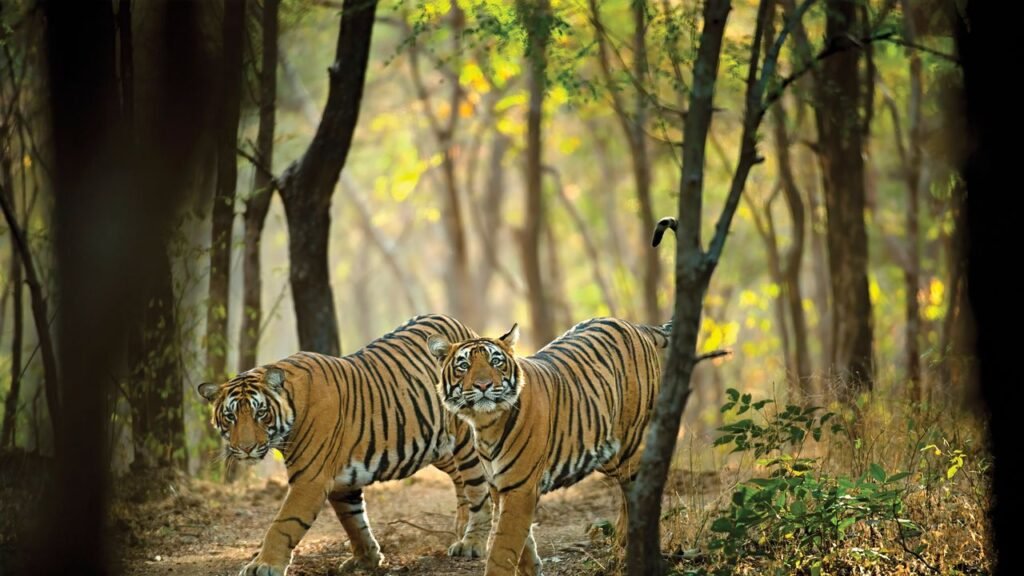Exploring Wildlife Conservation and Luxury Tourism in India
India has increasingly become a focal point for wildlife enthusiasts, especially with its diverse ecosystems and iconic species like the Bengal tiger and the Indian leopard. Fortunately, the burgeoning concept of wildlife tourism, while relatively new, has sparked interest not just in nature but also in conservation efforts.
The Shift in Conservation Policies
Historically, wildlife conservation in India has faced numerous challenges. Hunting was only prohibited in 1972, after which there was a dramatic rise in wildlife tourism. However, this boom brought with it complications, including deforestation and heightened human-wildlife conflict. As Larry, a notable figure in India’s wildlife tourism sector, pointed out, many operators still prioritize profits over environmental sustainability. His commitment to donating 20% of profits to conservation speaks volumes about the movement towards more responsible tourism practices.
Supporting Local Communities
Larry emphasizes that the revenues generated from tiger safaris should benefit surrounding communities as well. The symbiotic relationship between tourism and local welfare is essential for sustainable development. This approach not only preserves wildlife but also ensures that local populations thrive, reducing conflicts with wildlife and cultivating a culture of conservation.
Unique Accommodations at Suján
One of the shining stars in responsible tourism is the Suján collection, which comprises eco-luxury accommodations like Suján Sher Bagh and Suján Jawai. Located near Ranthambore National Park and Jodhpur respectively, these properties offer more than just luxury; they serve as platforms for conservation initiatives. The camp at Suján Sher Bagh is adorned with tented suites under peepal trees, showcasing a blend of luxury and local heritage while promoting sustainable practices.
Reforestation and Biodiversity
Suján Jawai has implemented reforestation efforts, successfully bringing back wildlife such as leopards and wild boars to the region. The combination of luxury and conservation creates a habitat where visitors can engage with nature while supporting ongoing ecological initiatives. With founders Anjali and Jaisal Singh at the helm, the brand’s commitment to sustainability is evident, signaling a shift in how tourism can positively impact wildlife conservation efforts.
A Journey to Madhya Pradesh
As our travels continued, we headed to Madhya Pradesh to stay at Jamtara, a wilderness camp on the fringes of Pench National Park. The camp is a simpler, eco-conscious option that seeks to mitigate human-wildlife conflict. Founded by Amit Sankhala, grandson of the renowned “Tiger Man of India,” Jamtara embodies the principles of responsible tourism.
The Jungle Book Inspiration
Pench National Park is credited with inspiring Rudyard Kipling’s The Jungle Book, adding to its allure for visitors. Despite the challenges of spotting a tiger due to the thick bush, the thrill of being in a prime tiger habitat is something no wildlife enthusiast would want to miss. Even without a direct tiger sighting, the experience of traversing the reserve reinforces the intrinsic connection between nature and humanity.
Embracing the Spirit of Adventure
Each experience in India’s diverse wildlife locations is unique, and Larry’s expertise in navigating the intricacies of access and permits has proven invaluable. From premier locations to knowledgeable guides, the nuances of a successful safari depend heavily on planning. This highlights the importance of responsible operators in the industry committed to conservation and enhancing visitor experiences.
The Future of Wildlife Tourism
The evolution of wildlife tourism in India illustrates a critical relationship between luxury, adventure, and conservation. Optimizing these elements can create a sustainable ecosystem that benefits not just tourists but also local communities and wildlife. As tourism continues to grow, so too does the responsibility of operators to ensure that their practices are eco-friendly and socially responsible.
Conclusion: A Call to Action
In conclusion, wildlife conservation in India is gaining traction, propelled by the intersection of luxury tourism and responsible practices. The work of individuals like Larry and initiatives like Suján exemplify how tourism can serve as a powerful tool for conservation and community welfare. For those interested in delving into this beautiful aspect of India, it’s crucial to choose operators that prioritize sustainability and ethical practices. Explore wildlife tours in India to contribute positively to the mountains, forests, and wildlife you encounter, making your journey an enriching and responsible experience.
By choosing eco-friendly options and supporting local communities, travelers can help ensure that India’s iconic wildlife remains for generations to come.









